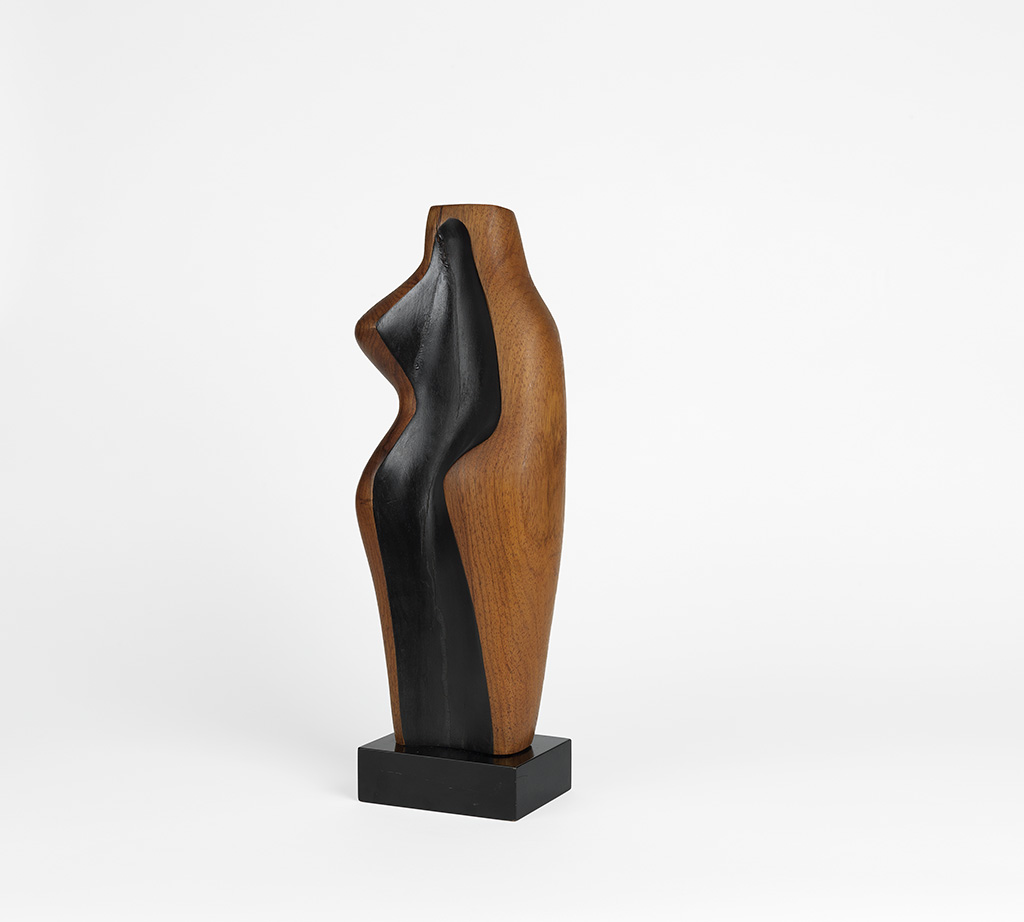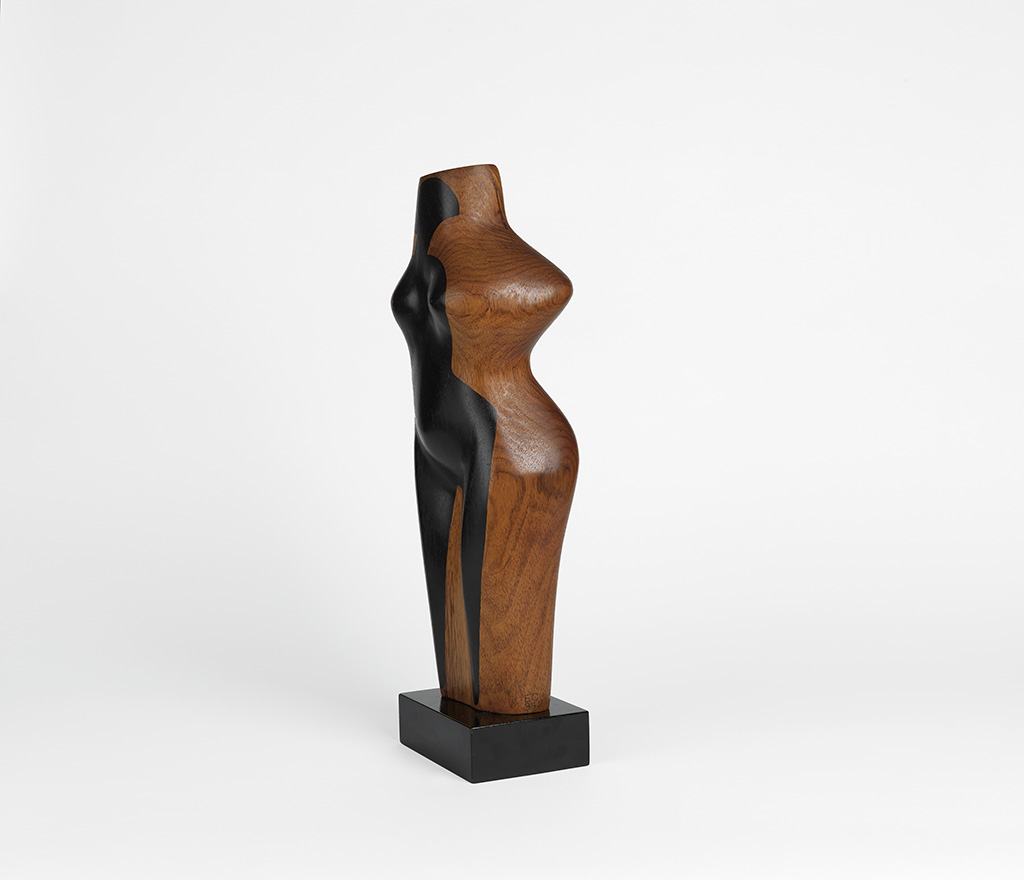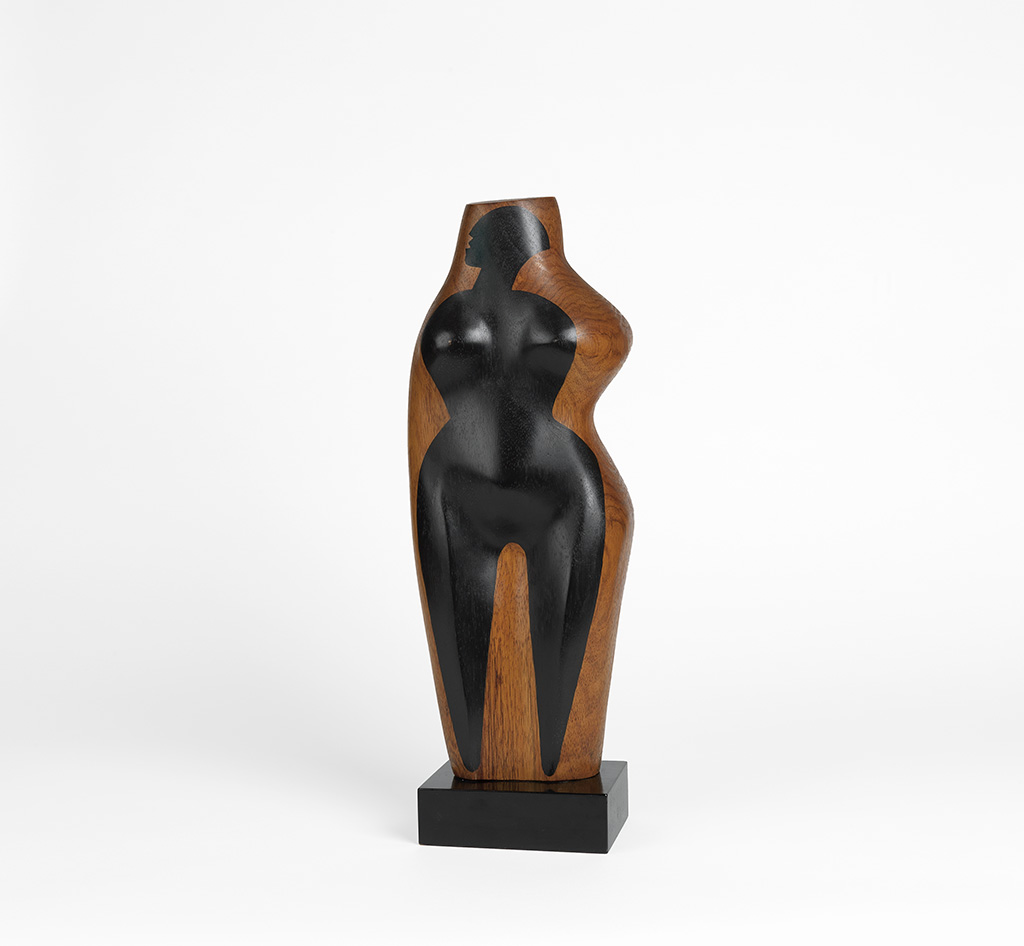Sale 2353 - Lot 119
Unsold
Estimate: $ 150,000 - $ 200,000
ELIZABETH CATLETT (1915 - 2012)
Standing Figure.
Carved tropical wood and black enamel, mounted on a painted wood base, 1986. 457x178x114 mm; 18x7x4 1/4 inches (not including the base.) Incised initials and date, lower right edge.
Provenance: Dorsky Gallery; private New York collection (1990), thence by descent to the current owner, private New York collection (1999).
Standing Figure is an outstanding example of Elizabeth Catlett's wood sculpture of her late career. It embodies her interest in the expression of the female form found within the natural beauty of her material.
Elizabeth Catlett has made sculpture in wood, mostly of the female nude, since the mid-1950s in Mexico. When she returned to sculpture, she began working in wood for the first time, studying with José L. Ruiz at the Esmeralda from 1955-1959. In Melanie Herzog's Elizabeth Catlett: An American Artist in Mexico, Catlett describes her work as representations of women, black women and herself - "I am a black woman. I use my body in working. When I am bathing or dressing, I see and feel how my body looks and moves. I never do sculpture from a nude model...Mostly I watch women."
Catlett has created a wonderful expression of the duality in the modern female figure. In the late 1960s, with such works as Homage to My Young Black Sisters, 1969, Catlett began experimenting with the use of polychrome and enamel paint to highlight the abstract qualities of her wood carving. In her Standing Figure, Catlett adds another level, recalling such precedents as Attic black figure painting from ancient Greek pottery. There is a fascinating interplay between the curvaceousness of the carved figure and the flatness of the black painted figure, between the voluminous figurative front and the excavated abstract back, and finally between the depth of the rich wood grain and the mattness of the black enamel paint.
This striking figure is only the third wood piece by the artist to come to auction. Herzog pp. 117 and 122.
Standing Figure.
Carved tropical wood and black enamel, mounted on a painted wood base, 1986. 457x178x114 mm; 18x7x4 1/4 inches (not including the base.) Incised initials and date, lower right edge.
Provenance: Dorsky Gallery; private New York collection (1990), thence by descent to the current owner, private New York collection (1999).
Standing Figure is an outstanding example of Elizabeth Catlett's wood sculpture of her late career. It embodies her interest in the expression of the female form found within the natural beauty of her material.
Elizabeth Catlett has made sculpture in wood, mostly of the female nude, since the mid-1950s in Mexico. When she returned to sculpture, she began working in wood for the first time, studying with José L. Ruiz at the Esmeralda from 1955-1959. In Melanie Herzog's Elizabeth Catlett: An American Artist in Mexico, Catlett describes her work as representations of women, black women and herself - "I am a black woman. I use my body in working. When I am bathing or dressing, I see and feel how my body looks and moves. I never do sculpture from a nude model...Mostly I watch women."
Catlett has created a wonderful expression of the duality in the modern female figure. In the late 1960s, with such works as Homage to My Young Black Sisters, 1969, Catlett began experimenting with the use of polychrome and enamel paint to highlight the abstract qualities of her wood carving. In her Standing Figure, Catlett adds another level, recalling such precedents as Attic black figure painting from ancient Greek pottery. There is a fascinating interplay between the curvaceousness of the carved figure and the flatness of the black painted figure, between the voluminous figurative front and the excavated abstract back, and finally between the depth of the rich wood grain and the mattness of the black enamel paint.
This striking figure is only the third wood piece by the artist to come to auction. Herzog pp. 117 and 122.
Exhibition Hours
Exhibition Hours
Aliquam vulputate ornare congue. Vestibulum maximus, libero in placerat faucibus, risus nisl molestie massa, ut maximus metus lectus vel lorem.










